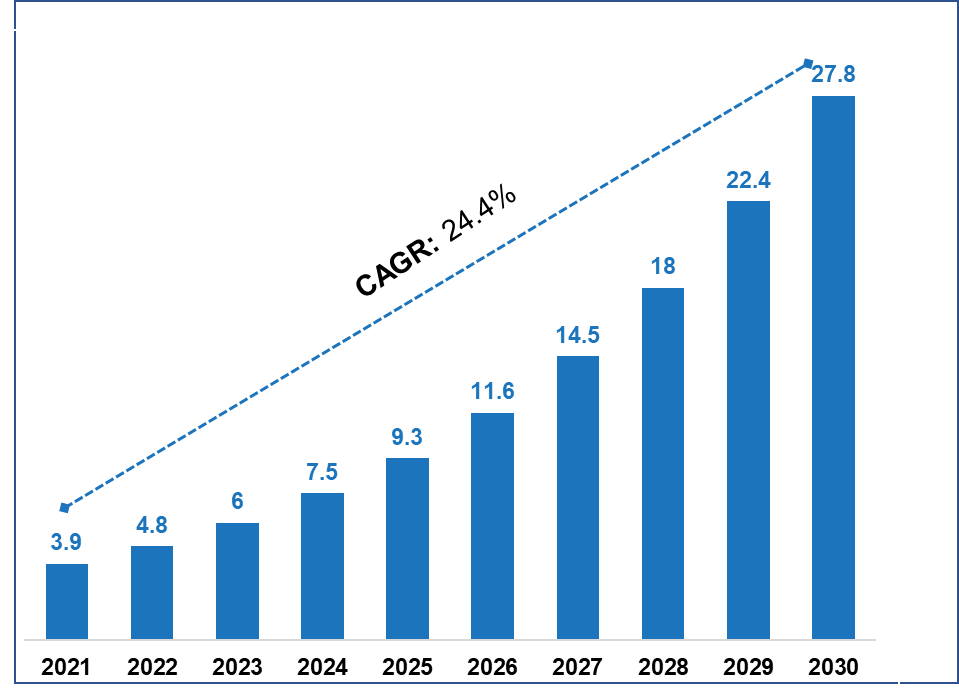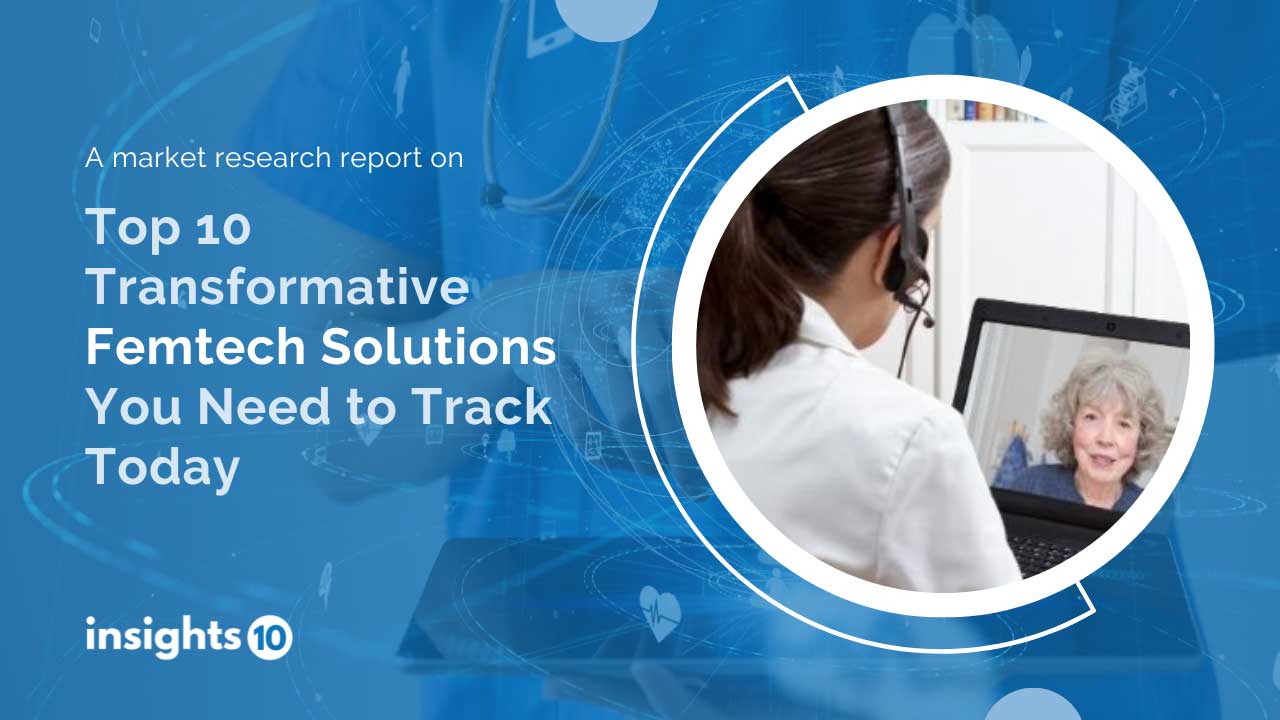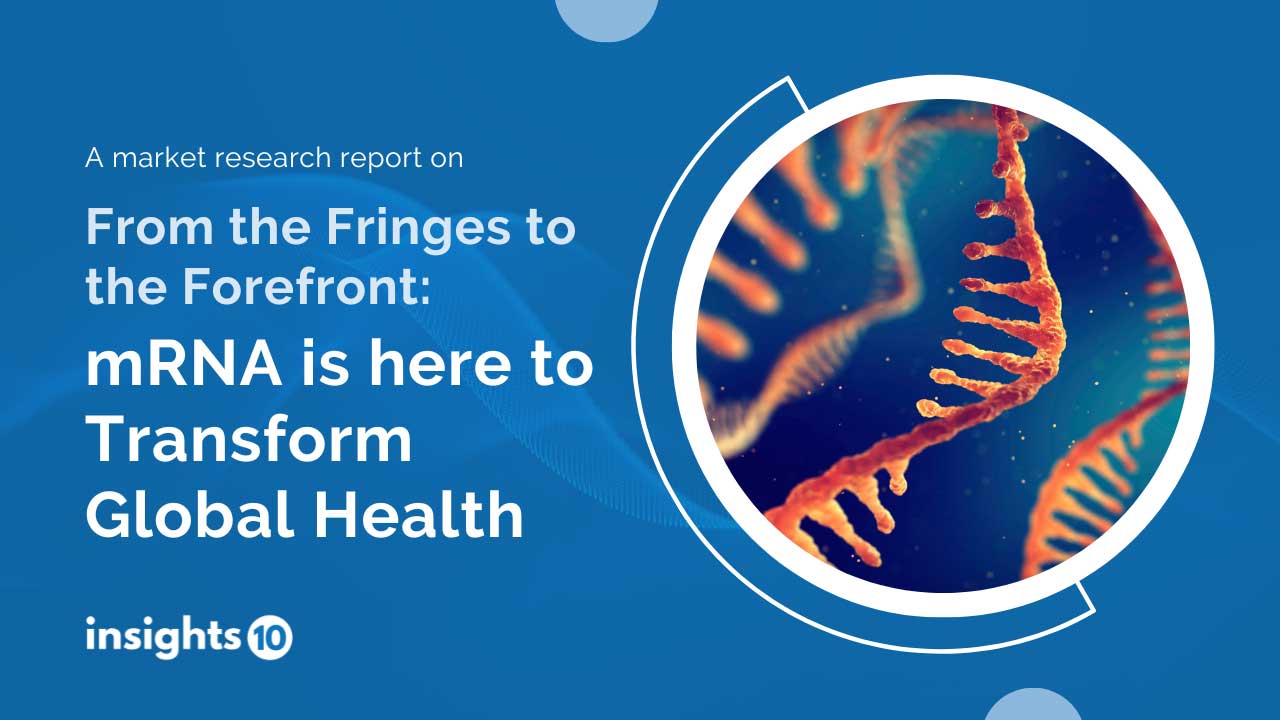Key Disease Areas where Digital Therapeutics is Booming ?
With the prevalence of fatal diseases escalating across disease areas, digital therapeutics have played a pivotal role in catering to patients outside of hospital setups. DTx has emerged as a novel category of medical interventions that are poised to disrupt the traditional care delivery spectrum.
Buy Now Download Sample Report

Growth of Global Digital Therapeutics Market Landscape
Global Digital Therapeutics Market, 2021-30 (USD Billion)

- A rising number of start-ups are betting on digital therapeutics by driving software and medical devices to support patient healthcare journey replacing the conventional approach
- A surge in the prevalence of preventable chronic conditions need for safe and accessible workarounds for the treatment of chronic as well as mental health diseases are driving the digital therapeutics market growth
- Other factors pushing the market potential include a shift in focus towards preventive and personalized healthcare, exponentially increasing investments and constantly evolving digital health tools
- Large pharma and medical technology companies are spawning a new branch of medicine while adopting a low-cost approach to differentiate their products replacing them with traditional treatment options
Key Disease Areas Digital Therapeutics is Revolutionizing
- Mental and Behavioural Health Disorders (Cognitive Behavioural Therapy, Game-based therapies, mHealth digital treatments)
- Metabolic Diseases (Digital therapeutics around dietary and exercise, AI-enabled personalized offerings)
- Oncology (Symptom-monitoring tools during chemotherapy, Evidence-based therapeutic interventions, Medical adherence)
- Respiratory Diseases (Digital self-management programs/apps for COPD and Asthma, Digital therapies)
- Immunology/Immune Disorders (Self-assessment tools for disease monitoring, Personalized recommendations apps to manage side effects)
- Gastrointestinal (Prescription digital therapeutics for abdominal pain, integrative approach to irritable bowel syndrome, Crohn's disease)
- Neurological Diseases (Videogame-based rehabilitation programs, Cognitive rehabilitation, Digital compensation therapies)
- Substance Abuse (Contingency management, Cognitive behavioral therapy, and other behavioral interventions)
- Cardiovascular Diseases (Digital health apps to push healthier lifestyles, reduce stroke risks, and monitor health vitals)
- Other Chronic Conditions (Curative digital therapies for treatment adherence and lifestyle behavior, Self-monitoring apps for health markers)
A pipeline of Digital Therapeutics
.jpg)
1. Executive Summary
1.1 Digital Health Overview
1.2 Global Scenario
1.3 Country Overview
1.4 Healthcare Scenario in Country
1.5 Digital Health Policy in Country
1.6 Recent Developments in the Country
2. Market Size and Forecasting
2.1 Market Size (With Excel and Methodology)
2.2 Market Segmentation (Check all Segments in Segmentation Section)
3. Market Dynamics
3.1 Market Drivers
3.2 Market Restraints
4. Competitive Landscape
4.1 Major Market Share
4.2 Key Company Profile (Check all Companies in the Summary Section)
4.2.1 Company
4.2.1.1 Overview
4.2.1.2 Product Applications and Services
4.2.1.3 Recent Developments
4.2.1.4 Partnerships Ecosystem
4.2.1.5 Financials (Based on Availability)
5. Reimbursement Scenario
5.1 Reimbursement Regulation
5.2 Reimbursement Process for Diagnosis
5.3 Reimbursement Process for Treatment
6. Methodology and Scope
Methodology for Database Creation
Our database offers a comprehensive list of healthcare centers, meticulously curated to provide detailed information on a wide range of specialties and services. It includes top-tier hospitals, clinics, and diagnostic facilities across 30 countries and 24 specialties, ensuring users can find the healthcare services they need.
Additionally, we provide a comprehensive list of Key Opinion Leaders (KOLs) based on your requirements. Our curated list captures various crucial aspects of the KOLs, offering more than just general information. Whether you're looking to boost brand awareness, drive engagement, or launch a new product, our extensive list of KOLs ensures you have the right experts by your side. Covering 30 countries and 36 specialties, our database guarantees access to the best KOLs in the healthcare industry, supporting strategic decisions and enhancing your initiatives.
How Do We Get It?
Our database is created and maintained through a combination of secondary and primary research methodologies.
1. Secondary Research
With many years of experience in the healthcare field, we have our own rich proprietary data from various past projects. This historical data serves as the foundation for our database. Our continuous process of gathering data involves:
- Analyzing historical proprietary data collected from multiple projects.
- Regularly updating our existing data sets with new findings and trends.
- Ensuring data consistency and accuracy through rigorous validation processes.
With extensive experience in the field, we have developed a proprietary GenAI-based technology that is uniquely tailored to our organization. This advanced technology enables us to scan a wide array of relevant information sources across the internet. Our data-gathering process includes:
- Searching through academic conferences, published research, citations, and social media platforms
- Collecting and compiling diverse data to build a comprehensive and detailed database
- Continuously updating our database with new information to ensure its relevance and accuracy
2. Primary Research
To complement and validate our secondary data, we engage in primary research through local tie-ups and partnerships. This process involves:
- Collaborating with local healthcare providers, hospitals, and clinics to gather real-time data.
- Conducting surveys, interviews, and field studies to collect fresh data directly from the source.
- Continuously refreshing our database to ensure that the information remains current and reliable.
- Validating secondary data through cross-referencing with primary data to ensure accuracy and relevance.
Combining Secondary and Primary Research
By integrating both secondary and primary research methodologies, we ensure that our database is comprehensive, accurate, and up-to-date. The combined process involves:
- Merging historical data from secondary research with real-time data from primary research.
- Conducting thorough data validation and cleansing to remove inconsistencies and errors.
- Organizing data into a structured format that is easily accessible and usable for various applications.
- Continuously monitoring and updating the database to reflect the latest developments and trends in the healthcare field.
Through this meticulous process, we create a final database tailored to each region and domain within the healthcare industry. This approach ensures that our clients receive reliable and relevant data, empowering them to make informed decisions and drive innovation in their respective fields.
To request a free sample copy of this report, please complete the form below.
We value your inquiry and offer free customization with every report to fulfil your exact research needs.















































